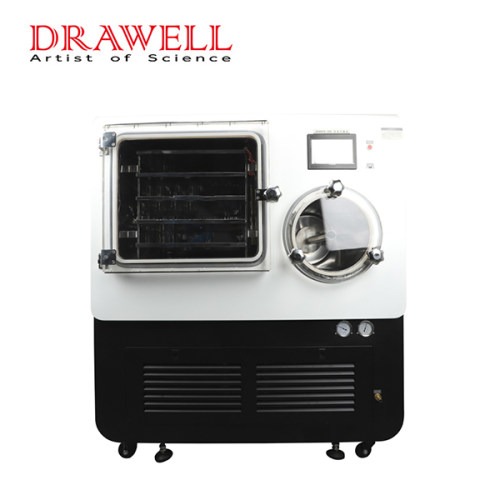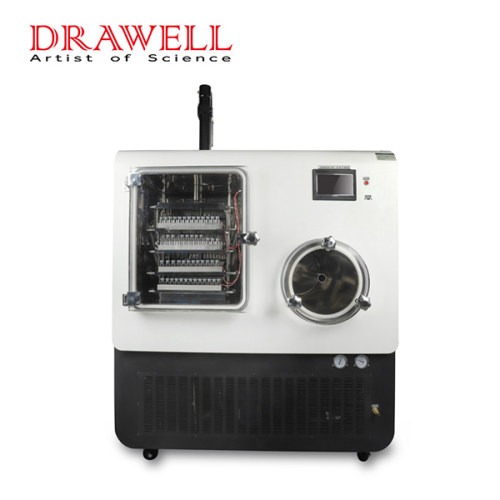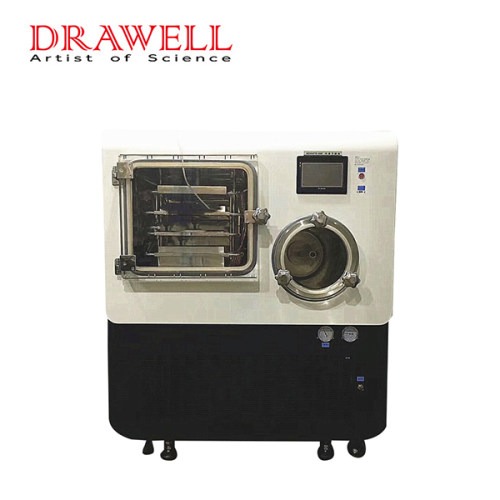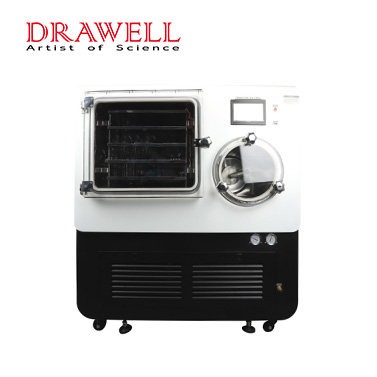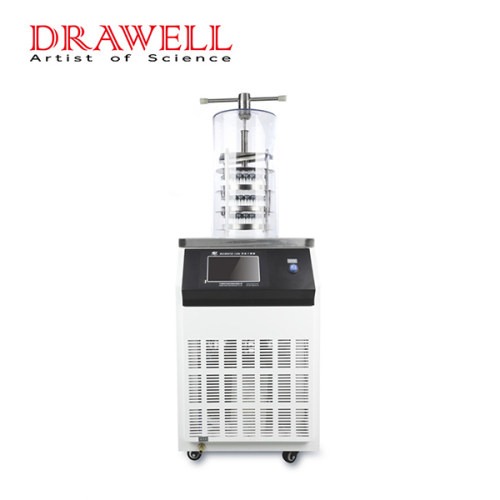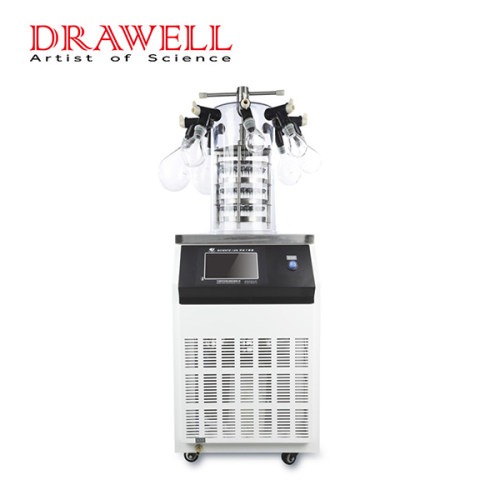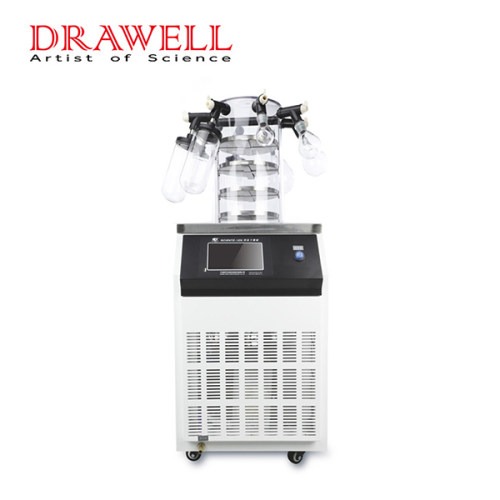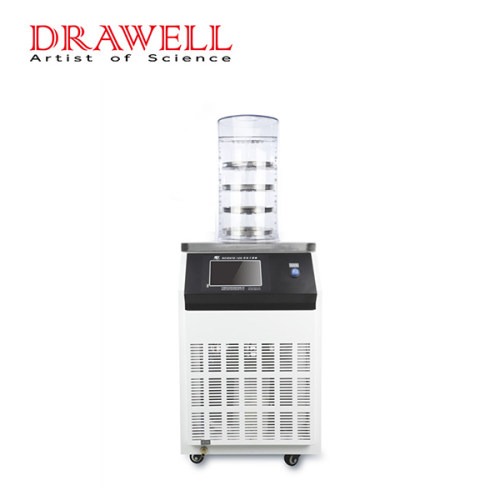Lyophilization, commonly known as freeze-drying, is a crucial process in various laboratory and industrial applications. It is used to preserve and stabilize delicate substances, such as pharmaceuticals, biological samples, and food products, by removing water content while maintaining their structural integrity. To accomplish this task efficiently, laboratory lyophilizers are essential equipment. In this article, we will explore the different types of lab lyophilizers and provide guidance on how to choose the right one for your specific needs.
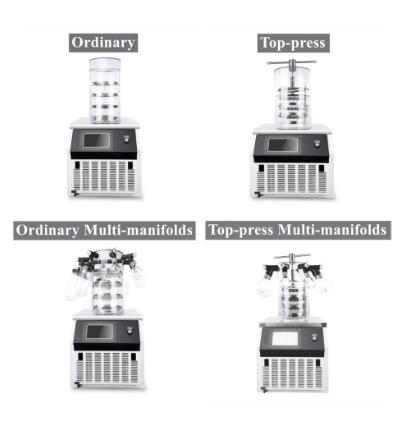
Understanding the Basics of Lab Lyophilization:
Before delving into the various types of lab lyophilizers, it’s essential to grasp the fundamentals of lyophilization. This process involves three primary steps:
- Freezing: The sample is frozen, which converts the water content into ice.
- Primary Drying: Under reduced pressure and controlled temperature, the frozen water sublimates, transitioning directly from a solid to a vapor.
- Secondary Drying: In this stage, the remaining unfrozen water is removed by raising the temperature and further reducing the pressure.
4 Different Types of Lab Lyophilizers
There are 4 common types of lab lyophilizers, each with distinct features and applications:
Benchtop Lyophilizers:
Features:
- Benchtop lyophilizers are compact, tabletop-sized freeze dryers commonly used in research laboratories, pharmaceutical development, and smaller-scale applications.
- They are designed to accommodate smaller sample volumes, such as vials, flasks, or petri dishes.
- These lyophilizers are user-friendly and straightforward to operate, making them suitable for small-scale research and sample preparation.
Applications:
Benchtop lyophilizers are often more cost-effective than larger models and are ideal for applications that do not require high throughput.
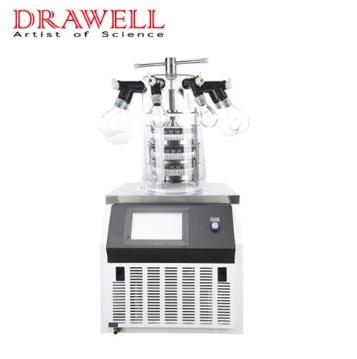
Floor-Standing Lyophilizers
Features:
- Floor-standing lyophilizers are larger, more versatile freeze dryers designed for industrial and larger-scale applications.
- They can handle a wide range of sample sizes and types, from small vials to bulk quantities of products.
- These lyophilizers provide advanced control and customization options, allowing users to tailor the drying process to specific requirements.
- They are equipped with efficient heat transfer and condenser systems, resulting in faster and more efficient drying.
Applications:
Floor-standing lyophilizers are commonly used in pharmaceutical production, food processing, and other industries where high throughput and precise control are essential.
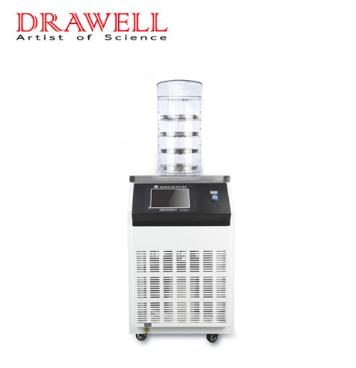
Manifold Freeze Dryers:
Features:
Manifold freeze dryers are a specialized type of freeze dryer designed for processing multiple samples simultaneously.
They are often used when cross-contamination between samples must be minimized, making them suitable for applications like microbiology and diagnostics.
They use a manifold or vacuum chamber to dry samples, and they are typically used for drying small vials, ampoules, or flasks.
Applications:
Manifold freeze dryers are particularly useful for handling delicate or heat-sensitive samples that may not be suitable for other lyophilizer types.
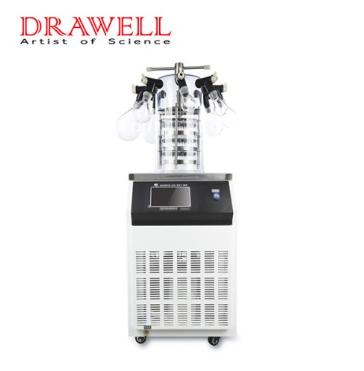
Rotating Drum Lyophilizers:
Features:
Rotating drum lyophilizers, also known as drum freeze dryers, are used for drying pasty or sticky products.
These lyophilizers feature a rotating drum or cylinder in which the product adheres and dries as it rotates.
The rotating drum promotes better heat distribution and more uniform drying, making it suitable for products that may not easily release from trays or shelves.
Applications:
Rotating drum lyophilizers are typically used in large-scale industrial applications where efficiency and precision are crucial.
How to Choose the Right Lab Lyophilizer
Selecting the right lab lyophilizer depends on your specific needs and the nature of your samples. Consider the following factors when making your choice:
- Sample Size: Determine the quantity of samples you need to process regularly and select a lyophilizer with a suitable capacity.
- Sample Type: Some samples are sensitive to oil vapors, making oil-free scroll pump lyophilizers a better choice in such cases.
- Automation and Control: Depending on the level of control and automation required for your application, choose a lyophilizer with the appropriate features.
- Budget: Consider your budget constraints and choose a lyophilizer that offers the best balance between cost and performance.
- Space: Ensure you have sufficient space in your laboratory for the chosen lyophilizer, taking into account the equipment’s size and any necessary accessories.
- Application: Different lyophilizers are better suited to specific applications. Evaluate your requirements and select a lyophilizer that aligns with your research or production goals.
Conclusion
In conclusion, lab lyophilizers are invaluable tools for preserving and stabilizing various substances in laboratory and industrial settings. By understanding the different types of lyophilizers and considering your specific needs, you can make an informed decision when choosing the right equipment for your application. Whether you’re working in research, pharmaceuticals, food processing, or biotechnology, selecting the appropriate lab lyophilizer is essential for achieving consistent and reliable results in freeze-drying processes.

